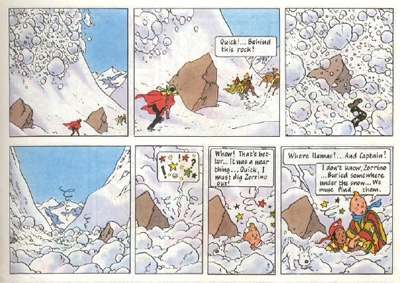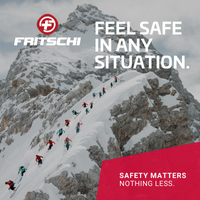The Cultural Heritage of Avalanches
Modern avalanche professionals have powerful tools at their disposal to mitigate the risk of living, working and traveling in avalanche terrain. Hand thrown explosive charges, 105 mm howitzers, and remotely triggered avalanche control towers all contribute to mitigate avalanche hazards in the modern age.
Yet none of these tools are as singularly effective or as globally applied as culture — humanity’s oldest tool for adapting to avalanches.
At first glance it may seem absurd that the stuff of culture — a story, symbol or ritual — could play a globally powerful role in reducing or responding to avalanche hazards, especially in the 21st century. However, a closer look reveals that human responses to avalanches have included cultural dimensions since the very first time our ancestors encountered sliding snow — and that these ancient practices and knowledge continue to shape our response to living with natural hazards.
There are no records of the first human who was caught and carried by an avalanche. We don’t know their name or what they thought as snow shifted beneath their feet and swept them down a slope. No incident report communicates the size of the slide or if the person survived. We can only speculate on where the avalanche may have occurred. All evidence has long since melted away in the millennia between this moment and that. We know nothing of the event itself. Yet we can know one thing with certainty. That moment — the first instance a person was present when the snow slid and the ground moved — that moment contradicted all existing human knowledge. The prior experience of a thousand generations — the sum of all wisdom until that day — attested that snow on the ground was firm, trustworthy. Until it wasn’t.

A 20th Century depiction of avalanches in pop culture (Tintin: Prisoners of the Sun). My first encounter with avalanches was in the pages of the Tintin comics.
If the first person caught in an avalanche survived, they would have returned to their tribe or family group with quite a story to tell. But what could that story be? What words can explain an event which contradicts all prior knowledge and experience? Why did the snow slide and — more importantly — what did it mean? An explanation for this new knowledge would have to be as much cultural as it was technical. A new story would be required in order to ascribe meaning to the movement of snow. This shifting worldview in response to natural hazards is universal, to the extent that “every human society maintains its sense of identity with a set of stories which explained, at least to its satisfaction, how things came to be” (Deloria, 1995). For early humans, making meaning out of hazards in the natural world allowed for the creation of collective outlooks and behaviours which enabled communities to devise and implement strategies to respond to the hazard. While modern avalanche forecasting and mitigation infrastructure is only about 150 years old, human attempts to comprehend and explain avalanches began immediately after witnessing that very first slide.
Societies around the world respond to natural hazards like avalanches through the development of cultures of risk management which include not only technical solutions but also cultural strategies for survival. These cultural responses evolved as humanity’s ancient tools for making sense of the world, for creating meaning out of chaos and adapting to hazards. Beyond stories, cultural elements include: oral traditions and expressions, language, performing arts, social practices, ritual and festive events, and traditional craftsmanship. In recognition of cultures of risk management, UNESCO in 2018 added “Avalanche Risk Management” in Austria and Switzerland to the List of the Intangible Cultural Heritage of Humanity, illustrating "the fact that natural hazards are not mere technical challenges but also cultural challenges that each society addresses in its own way” (UNESCO, n.d.). Indeed, while all cultures use symbolism to depict and explain disasters, the global nature of avalanches leads to diverse cultural expressions in mountain communities around the world. Yet despite diverse local practices, cultural expressions — regardless of geographical location — appear to play a critical role in the formation of an infrastructure of social protection: enhancing coping, hazard mitigation and providing a context in which to comprehend future events.
 The 2014 film Force Majeure is a 21st Century depiction of avalanches in popular culture.
The 2014 film Force Majeure is a 21st Century depiction of avalanches in popular culture.Although they are among humanity’s oldest strategies for survival, stories and symbols remain universally powerful tools for mitigating avalanche risk. The stuff of culture is part of everyday practice for avalanche professionals and recreational backcountry travelers alike: stories and symbols are employed daily by forecasters to communicate avalanche hazards to the general public, teams of ski guides perform daily rituals of guide’s meetings and information sharing, and ski patrollers discuss past events and individuals in order to lend meaning to present snowpack instabilities. Most poignantly, following avalanche fatalities, cultural practices can be observed in the established formal and informal rituals of investigation, reflection and community support.
The community and practice of avalanche professionals and backcountry skiers is infused with cultural history and meaning. Although human beings have developed modern tools and techniques for coexistence with natural hazards, our most powerful tools are composed of the same basic cultural building blocks that were expressed by the very first human caught in an avalanche: story, symbol and ritual.
Portions of this article originally appeared in The Avalanche Journal (2021, Vol. 126).
Jerry Isaak is an Associate Teaching Professor and the program lead for ski touring in the Adventure Studies Department at Thompson Rivers University in Kamloops, British Columbia. He is an AMGA certified Ski Guide and has guided backcountry ski adventures in Iceland, Kyrgyzstan, Japan, and throughout the United States and western Canada.









